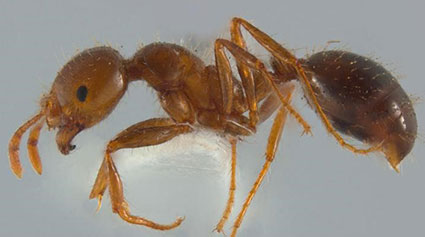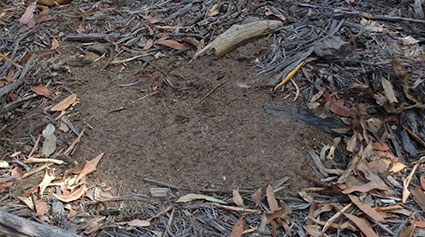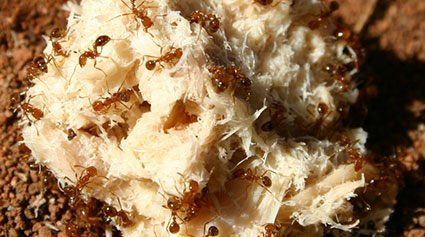PLANT PEST

Exotic to Australia, under eradication or management
Features: This group of invasive ant species, including the red imported fire ant, are aggressive, spread quickly and would disrupt our environment and usual way of life
Where they're from: Asia, Africa, Europe, North America, Central America, Caribbean, South America, Oceania
How they spread: Importation of goods, packaging or conveyances infested with ants
At risk: The environment, our way of life, agriculture, infrastructure and human health
Red imported fire ant is one of the invasive tramp ant species we need to keep out of Australia.
Scott Bauer, USDA Agricultural Research Service, Bugwood.org
Keep it out
These invasive ant species are highly invasive. Once introduced, they spread rapidly threatening the environment, agriculture and way of life.
Invasive ants can disrupt local wildlife, sting humans and animals and prevent people from enjoying the outdoors. They can eat plants and even damage machinery and buildings including electrical insulation.
Many species originate from South America, including red imported fire ant, the Argentine ant and the electric ant, but browsing ant is native to southern Europe. Yellow crazy ant is thought to originate from Africa but can now be found throughout the Pacific.
Stop the spread
Some species have already invaded parts of Australia and measures are in place to prevent them spreading any further or to eradicate them. For further information visit Outbreak | National pest & disease outbreaks.
Importing goods
To keep invasive ants out of Australia, never ignore Australia’s strict biosecurity rules.
Import shipments may need to be treated and certified, so before you import, check our Biosecurity Import Conditions system (BICON).
What to look for
Keep an eye out for unfamiliar ant species, particularly around anything newly imported, or if you live near ports.













Where to look
Importers
If you work around imported goods you need to look for invasive ants on:
- crates
- machinery
- plant material
- shipping containers
- conveyances.
Home gardeners and people living near ports
Ants can be moved in:
- containers
- soil
- plants
- timber
- machinery
- goods carried by passengers.
Moving items out of your backyard, including pot plants can be an easy way for invasive ants to move to new locations. If you live in an area known to have invasive ants, take care not to spread them with items such as these. Consider leaving the items behind.
What to do
If you think you’ve found invasive ants:
- take a photo
- do not disturb the ants (this may be as simple as closing the doors on a shipping container or bagging a pot plant)
- collect a sample, if safe to do so.
Read the detail
- Queensland government: Electric ant
- Queensland government: Yellow crazy ants
- Western Australian government: Browsing ants
- Western Australian government: Argentine ants
- National pest and disease outbreak
- Pest Alert! Do you have stowaways on board?
- Biological control of crazy ants on Christmas Island
- Plan to reduce the threat of invasive ants in Australia
